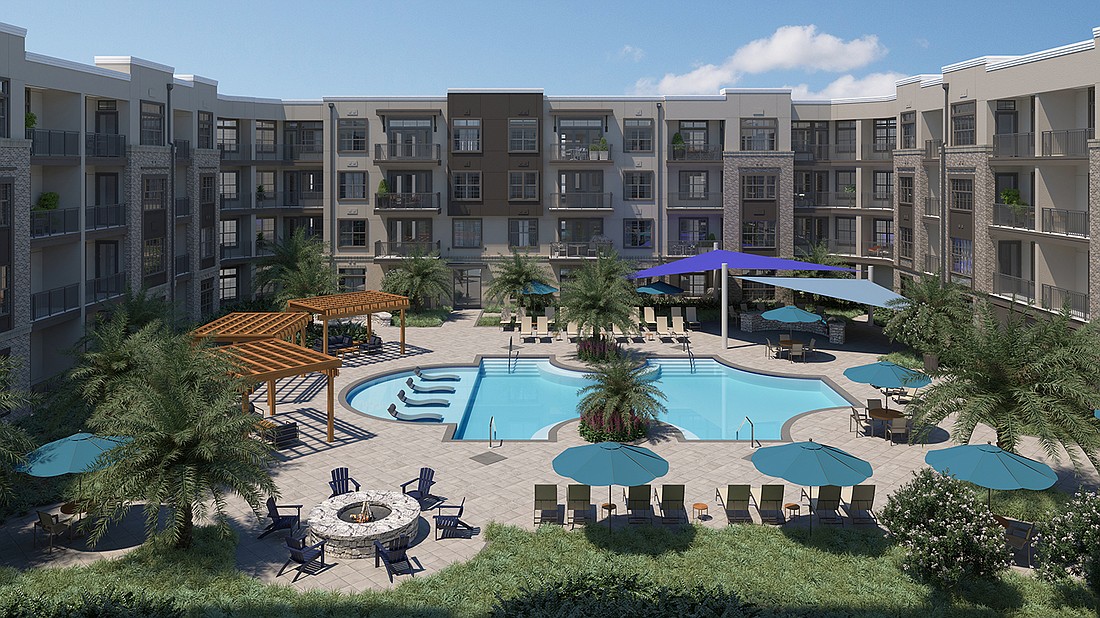
The multifamily investment sector in Northeast Florida slowed in March amid the uncertainty of the coronavirus pandemic.
Questions about rebounding employment and government economic relief slowed investment in the sector.
The April spike in unemployment up to 11.2% had little effect on Jacksonville multifamily occupancy rates, which fell year-over-year from 95.6% to 94.8%, according to the Colliers International Northeast Florida Q2 2020 Multifamily Research and Forecast Report for the Jacksonville Metropolitan Statistical Area covering April-June.
The relative strength in occupancy is attributed to the $1,200 payments from the coronavirus relief bill, the $600 in federal weekly jobless benefits, which ended July 31, and the eviction moratorium, the report said.
Congress has been debating a second COVID-19 package and President Donald Trump signed four executive orders addressing rent relief, unemployment benefits, a payroll tax holiday and deferral of student loan payments.
Bradley Coe, senior director of Multifamily Investment Services with Colliers International Northeast Florida, said there is concern about rent collections as federal relief ends.
“Rent collections April through June were in the 90% to 95% range,” he said, which is normal.
As of Aug. 12, collections are down to 87%. However, “rent collections tend to tick up as the month unfolds,” he said.
The Class A and B – newer communities – are “doing a good job weathering the storm, but the C Class is not doing as well just because of the renter demographic, which are more likely to be unemployed and less likely to make payments,” he said.
The Colliers report cited U.S. Bureau of Labor Statistics and CoStar commercial real estate data that show the Jacksonville area lost 90,000 jobs in March and April but recovered 45% of those losses by the end of June.
The metro area unemployment rate dropped to 10.5% in May and 8% in June after business reopenings.
Colliers reported that new rental rates fell 0.5% quarter-over-quarter and remained unchanged year-over-year.
In general, newer apartment communities experienced a slight decline in rents. Coe said lease-up for those communities is now about half the number of units, and concessions have held steady.
Average rents in the Jacksonville area in June were $1,095, or $1.14 per square foot.
As the second quarter ended, there were about 120,293 units in communities with more than 50 units.
During the quarter, 715 vacant units were rented while communities completed 928 units. There are 4,928 apartment units under construction.
“The annual demand for new units in the market is roughly 2,000 and annual completions are around 3,300,” Coe said.
Multifamily investment sales
Colliers’ 2019 Jacksonville year-end report identified 60 multifamily sales totaling $1.31 billion and comprising 12,876 units.
This year, sales are down but the average per-unit price is up.
Last year as of June, there were 26 transactions. This year there were 11 and volume is down $200 million.
However, the average per-unit price increased from $104,000 in 2019 to $152,750, up almost 46.9% because of newer communities being sold.
“The big impact felt in the sector is the number of transactions in the second quarter are down 60%,” Coe said.
Seven of the 11 sales in 2020 were after the COVID-19 shutdown in mid-March.
“Investors are still on the sidelines because we still don’t know what is going to happen as it relates to future rent collection levels,” Coe said.
He said the uncertainty lies in the inability to measure rent growth opportunities, potential increases in delinquency and the ability to make improvements for increased rents for the value-add investor.
Federal relief helped apartment owners “ride this thing out,” he said.
“They are saying my collections are still good, my income is still good and occupancy is strong. Why should I sell an asset that may have to be discounted anywhere from eight to 12%?”
The older Class C communities are more in jeopardy of reduced rental income leading to problems with owner mortgage payments, Coe said.
Certainty depends on the return of jobs and additional federal relief.
A recent Colliers Investor Sentiment Survey shows an increase in investor optimism because of business reopenings. More investors are expecting increased rent and asset value growth.
Steady construction
Marc Padgett, president and CEO of Jacksonville-based general contractor Summit Contracting Group, said he is “seeing a steady rate of project starts for both suburban garden-style and high density urban” multifamily.
Summit has eight communities, comprising 1,505 units, under construction in the Jacksonville area.
“Some developers have requested a little extra lead time before breaking ground. All our projects are going vertical as planned,” Padgett said.
Project construction during the pandemic is on schedule, he said.
“Early orders are critical right now if we want products to arrive when needed,” Padgett said. He has had to find sources for some materials in the U.S. that normally come from overseas.
Delivery of materials such as appliances, windows and trusses has been slow, but costs have not increased, he said.
Padgett said he is not seeing COVID-19-related design changes to multifamily amenities where people gather, but changes “in the way those amenities are managed, with increased cleaning protocols, space reservations, etc.”
“Interest in coworking spaces and in-home offices has risen in recent years but is now prominent in apartment designs. How important are these spaces? It may be too early yet to know the impact of our current economy on future need, and will likely depend on the local employment markets as well,” he said.